Wars of the Three Kingdoms
Dalhousie was among those of the commissioners appointed for the subscription of the king's covenant who were Covenanters; and he subscribed the libel against the bishops presented the same year to the presbytery of Edinburgh. He signed the letter of the covenanting lords of 19 April 1639 to the Earl of Essex, and served as colonel in the covenanting army which took up a position on Dunse Law to bar the progress of Charles I northwards in the First Bishops' War. He also served as colonel in the covenanting army which on 2 August 1640 crossed the River Tweed and invaded England. [2]
At the parliament held at Edinburgh in November 1641 Dalhousie's name was inserted in the new list of privy councillors, to displace others chosen by the king. Dalhousie was engaged in the campaign in England in 1644, in command of a horse regiment, but in the autumn he was called out of England with his regiment to proceed to the north of Scotland to aid Argyll against Montrose. On 2 August 1645 Montrose's second son James, Lord Graham, who had been confined in Edinburgh Castle, was placed with Dalhousie to be educated. [2]
On 24 October 1646 Dalhousie was appointed to the office of high sheriff of the county of Edinburgh. On 4 May 1648 he was nominated colonel of horse for Midlothian, for the engagement in behalf of Charles I; but apparently did not accept the office, remaining a close partisan of Argyll. He was one of the fourteen nobles who attended the parliament of January 1649, when the severe act was passed against those who had taken part in the engagement. In March 1651 he was nominated by Charles II colonel for Midlothian. [2]

John Maitland, 1st Duke and 2nd Earl of Lauderdale, 3rd Lord Maitland of Thirlestane KG PC was a Scottish politician and leader within the Cabal Ministry.

William Hamilton, 2nd Duke of Hamilton KG was a Scottish nobleman who supported both Royalist and Presbyterian causes during the Wars of the Three Kingdoms.

John Graham, 7th of Claverhouse, 1st Viscount Dundee was a Scottish soldier and nobleman, a Tory and an Episcopalian. He was responsible for policing southwest Scotland during and after the religious unrest and rebellion of the late 17th century, and went on to lead the Jacobite rising of 1689.

James Graham, 1st Marquess of Montrose was a Scottish nobleman, poet, soldier and later viceroy and captain general of Scotland. Montrose initially joined the Covenanters in the Wars of the Three Kingdoms, but subsequently supported King Charles I as the English Civil War developed. From 1644 to 1646, and again in 1650, he fought in the civil war in Scotland on behalf of the King. He is referred to as the Great Montrose.
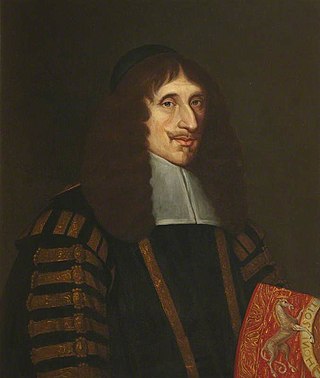
John Campbell, 1st Earl of Loudoun was a Scottish politician and Covenanter.

General George Ramsay, 9th Earl of Dalhousie,, styled Lord Ramsay until 1787, and Baron Dalhousie from 1815, was a Scottish soldier and colonial administrator. He was Governor of Nova Scotia from 1816 to 1820, Governor General of British North America from 1820 to 1828 and later Commander-in-Chief in India. In turn, his son, James Andrew Broun-Ramsay, 1st Marquess of Dalhousie, would later serve as Governor-General of India.

Earl of Dalhousie, in the County of Midlothian, is a title in the Peerage of Scotland, held by the Chief of Clan Ramsay.

Archibald Campbell, Marquess of Argyll, 8th Earl of Argyll, Chief of Clan Campbell was a Scottish nobleman, politician, and peer. The de facto head of Scotland's government during most of the conflict of the 1640s and 1650s known as the Wars of the Three Kingdoms, he was a major figure in the Covenanter movement that fought for the maintenance of the Presbyterian religion against the Stuart monarchy's attempts to impose episcopacy. He is often remembered as the principal opponent of the royalist general James Graham, 1st Marquess of Montrose.

David Leslie, 1st Lord Newark was a Scottish military officer and peer. During the Thirty Years' War, he joined in the Swedish Army in 1630 and served under Alexander Leslie. Returning to Scotland in the final days of the Bishops' War, Leslie fought in the English Civil War and Scottish Civil Wars on the side of the Covenanters and Royalists. After the Stuart Restoration, Leslie was raised to the peerage of Scotland as Lord Newark by Charles II of England.
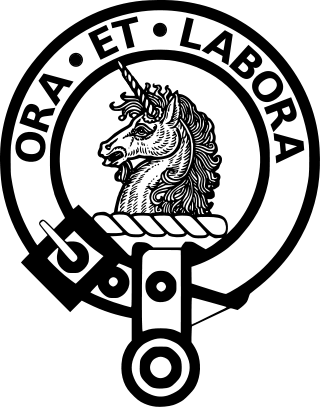
Clan Ramsay is a Lowland Scottish clan.

John William Maule Ramsay, 13th Earl of Dalhousie,, styled Lord Ramsay between 1874 and 1880, was a Scottish naval commander, courtier and Liberal politician. He served as Secretary for Scotland in William Ewart Gladstone's short-lived 1886 administration.

William Kerr, first Earl of Lothian of a new creation (1605–1675) was a Scottish nobleman.
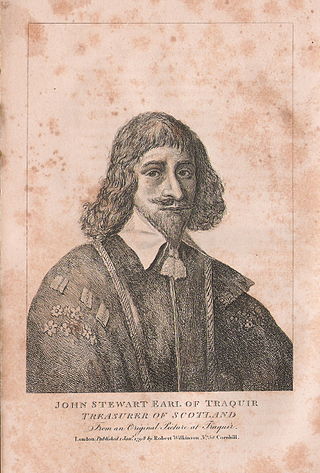
John Stewart, 1st Earl of Traquair was a Scottish statesman who was created Baron Stewart of Traquair in 1628 and Earl of Traquair in 1633.
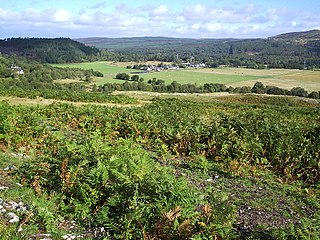
The Battle of Carbisdale took place close to the village of Culrain, Sutherland, Scotland on 27 April 1650 and was part of the Wars of the Three Kingdoms. It was fought by the Royalist leader James Graham, 1st Marquess of Montrose, against the Scottish Government of the time, dominated by Archibald Campbell, 1st Marquess of Argyll and a grouping of radical Covenanters, known as the Kirk Party. The Covenanters decisively defeated the Royalists. The battlefield has been inventoried and protected by Historic Scotland under the Scottish Historical Environment Policy of 2009. Although Carbisdale is the name of the nearest farm to the site of the battle, Culrain is the nearest village.
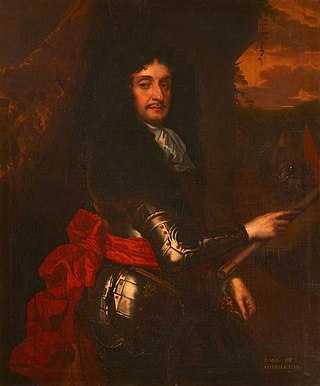
John Middleton, 1st Earl of Middleton was a professional soldier and mercenary from Kincardineshire in Scotland. Beginning his career in the Thirty Years War, during the Wars of the Three Kingdoms he fought for the Covenanters and Parliamentarians until 1648, when he switched sides to the Royalists.
Donald Mackay, 1st Lord Reay, 14th of Strathnaver was a Scottish soldier and member of Parliament. He played a prominent role in the Thirty Years' War, raising a regiment of 3,000 men, which served in both the Danish and Swedish forces. He was later an unwilling Covenanter. He was the fourteenth chief of Clan Mackay, a Highland Scottish clan.
George Ross, 11th Lord Ross of Halkhead, was a Scottish nobleman and soldier.
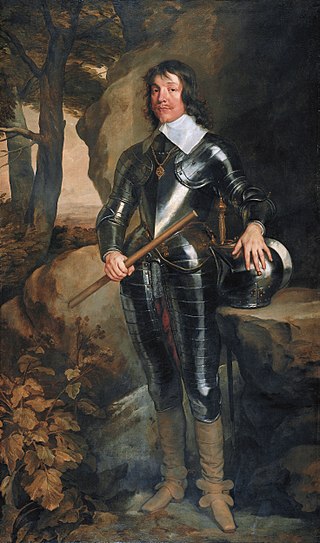
James Hamilton, 1st Duke of Hamilton, KG, PC, known as the 3rd Marquess of Hamilton from March 1625 until April 1643, was a Scottish nobleman and influential political and military leader during the Thirty Years' War and the Wars of the Three Kingdoms.
James Graham, 2nd Marquess of Montrose was a Scottish nobleman and judge, surnamed the "Good" Marquess.
![]() This article incorporates text from a publication now in the public domain : Lee, Sidney, ed. (1896). "Ramsay, William (d.1674)". Dictionary of National Biography . Vol. 47. London: Smith, Elder & Co.
This article incorporates text from a publication now in the public domain : Lee, Sidney, ed. (1896). "Ramsay, William (d.1674)". Dictionary of National Biography . Vol. 47. London: Smith, Elder & Co.














